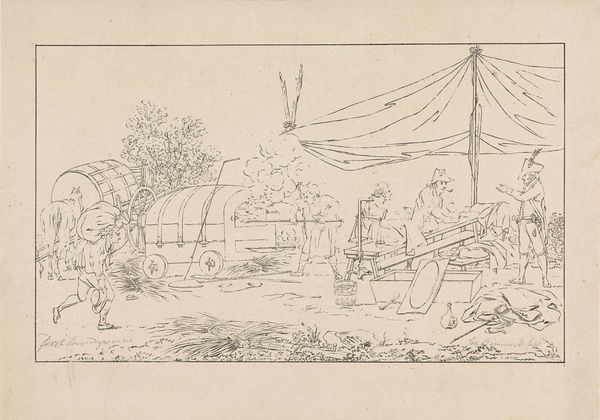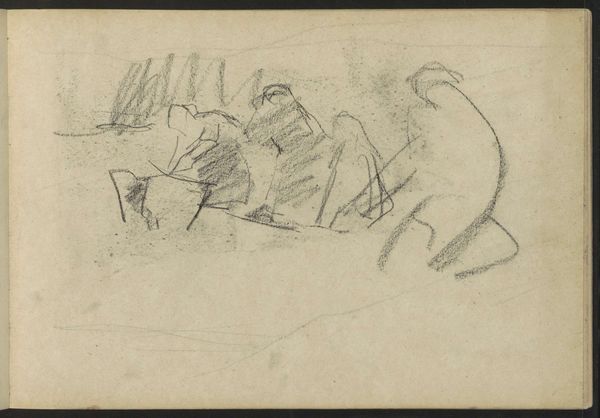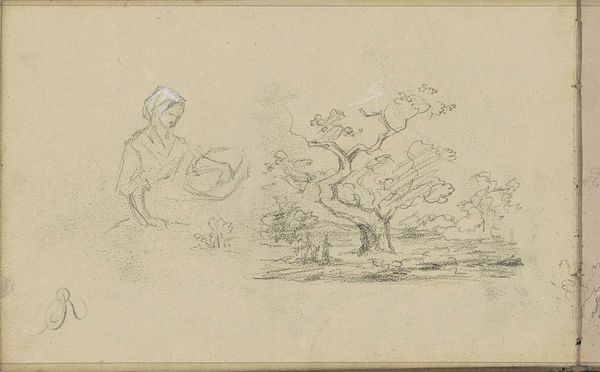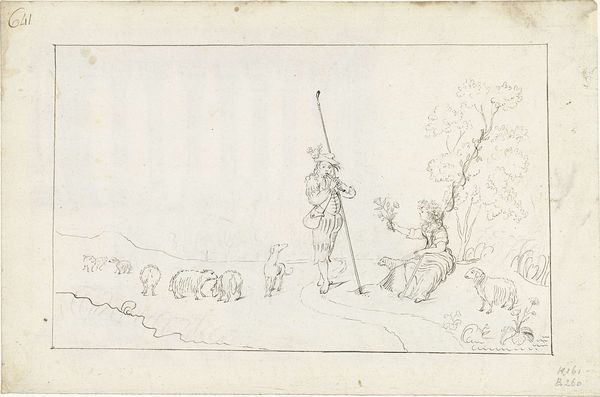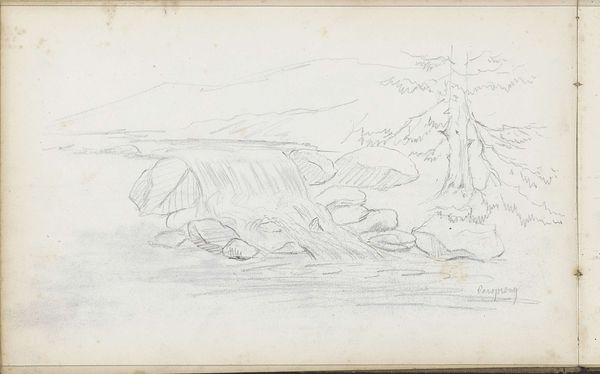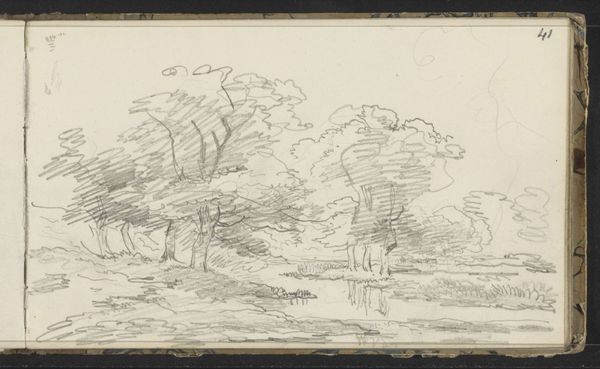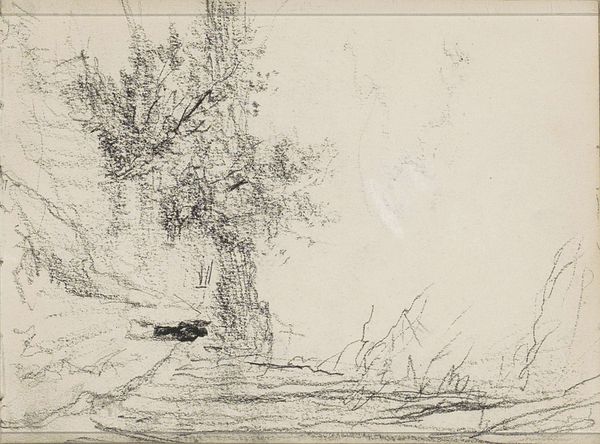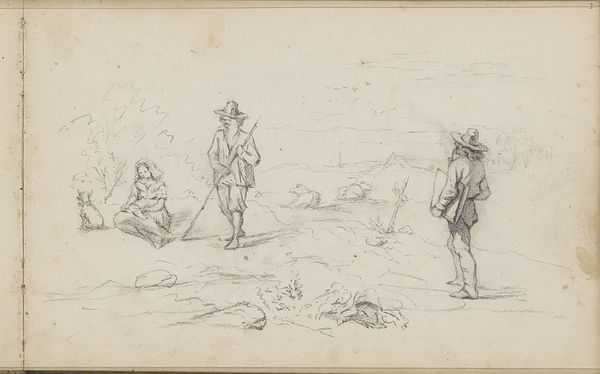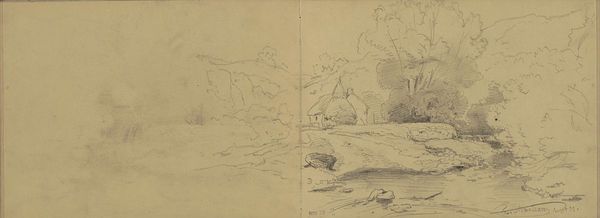
drawing, pencil
#
drawing
#
16_19th-century
#
pen sketch
#
pencil sketch
#
landscape
#
pencil
#
sketchbook drawing
#
genre-painting
#
realism
Dimensions: height 184 mm, width 282 mm
Copyright: Rijks Museum: Open Domain
Curator: This is "Woman Washing Clothes in a River," a pencil drawing from 1874 by Willem Cornelis Rip. What are your first thoughts? Editor: Immediately, a kind of poignant stillness. It's quiet, even though you know there would be the sounds of the water, the cloth being wrung, maybe the woman humming to herself. A sense of everyday life rendered with such delicate lines. Curator: It's fascinating how Rip captures that feeling with such sparse detail. The river, for instance, is suggested with the simplest of strokes, yet you feel the cool, flowing water. There's a directness in the composition—a genre scene stripped down to its most essential elements. Water, earth, life. The eternal toil, really. Editor: Exactly. The donkey standing motionless in the background… almost ghostly, blending into the landscape. And the woman herself, her face hidden, absorbed completely by her task. It’s a symbol for anonymity, of disappearing within the routine and endless demands of life. And that sketch up in the right-hand corner adds this dreamlike quality, the freedom of pure uninhibited creativity, as well. Curator: It speaks volumes about the realities of rural life in the 19th century. Women's labor was often invisible, yet essential to survival. Water, of course, in this context, represents purification but also the cleansing of social boundaries. Remember that water was historically also the meeting place for a village and even town gatherings. The woman herself represents the life-giving aspect of water and fertility. Editor: I love how the almost hurried style really evokes fleeting time itself, capturing not just a woman but the flow of existence in a quiet moment that holds entire universes. What could the artist have been doing that day, what he saw that pulled his interest towards rendering it in such a soft but powerful way? Curator: An intimate and evocative observation of ordinary life turned into a window into social context. Editor: Making it something that, though simple, allows you to just stop and dream. I mean, what could be better?
Comments
No comments
Be the first to comment and join the conversation on the ultimate creative platform.


